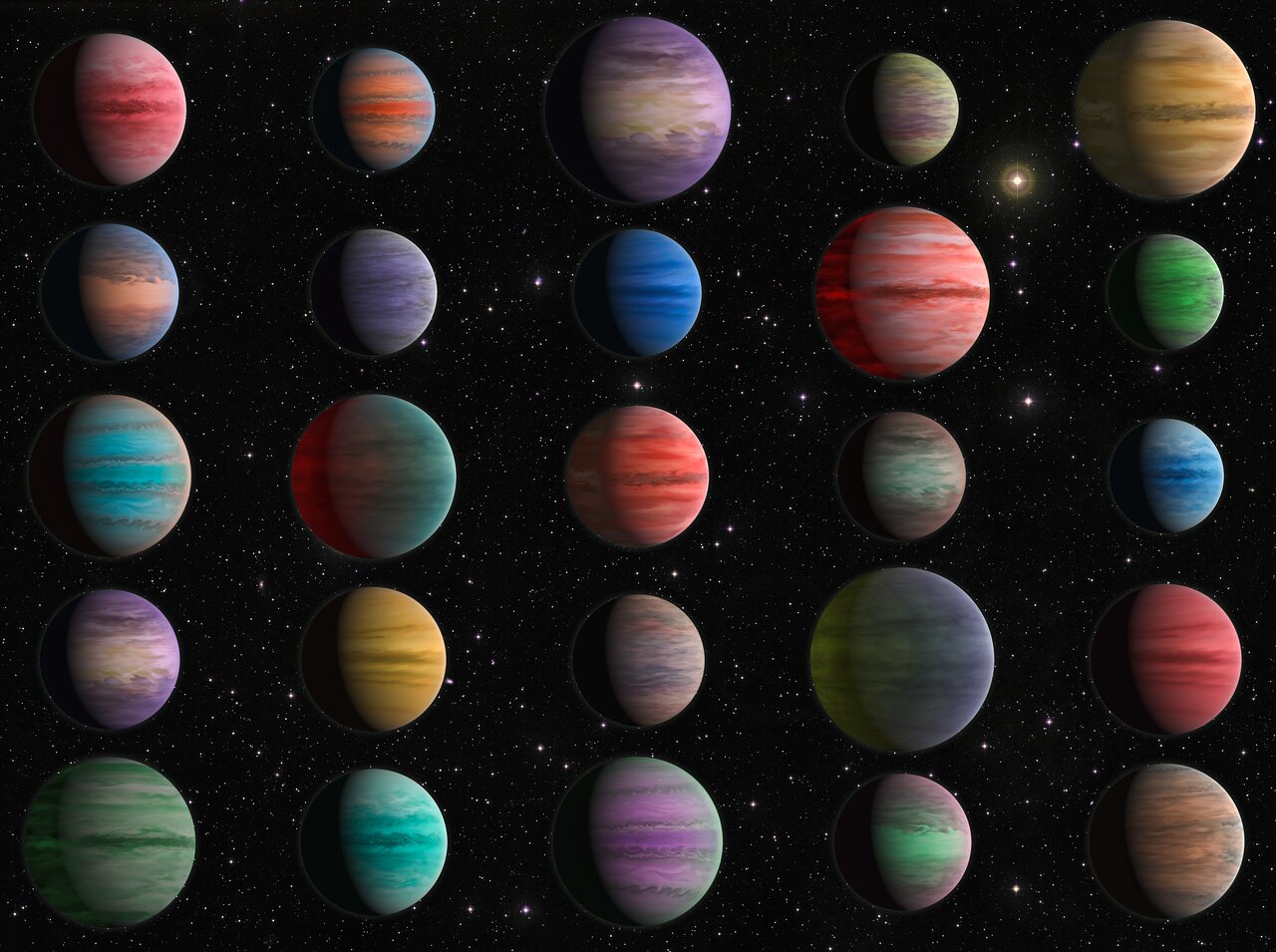Greenhouse effect taken to the extreme
Our solar system is relatively unusual with its division into four rocky worlds on the inside and another four gas and ice planets on the outside. What it lacks, for example, is a so-called “Hot Jupiter”: a gas giant the size of our Jupiter, which orbits very close to its parent star and thus heats up extremely strongly. Therefore, if you want to learn something about Hot Jupiters, you have to look into the distance. Such a specimen appears in many of the more than 5000 planetary systems catalogued so far.
What do these types of planets have in common? Researchers at University College London (UCL) looked at the atmospheres of 25 such exoplanets for a study, analyzing them using the largest amount of archival data ever used in a single survey of exoplanets. The group used data from 600 hours of Hubble observations, which they supplemented with more than 400 hours of observations from the Spitzer Space Telescope. Their data included eclipses for all 25 exoplanets and transits for 17 of them. An eclipse occurs when an exoplanet passes behind its star as seen from Earth, and a transit occurs when a planet passes in front of its star. Both eclipse and transit data can provide important information about an exoplanet’s atmosphere.
One important finding is that if the planet is so hot that its atmosphere contains metal vapors, then there is also a temperature reversal. This means that the atmosphere is hotter at the top than at the bottom. With the earth, but also with our Jupiter, it behaves the other way around. The study also found that almost all exoplanets with thermally inverted atmospheres were extremely hot, with temperatures above 2000 Kelvin. Under these conditions, the metal oxides TiO (titanium oxide), VO (vanadium oxide), and FeH (iron hydride) are stable in an atmosphere. Of the exoplanets that have thermal inversions, almost all have been found with H-, TiO, VO, or FeH in their atmospheres.
Now correlation does not necessarily equate to causality. However, the group found a compelling argument for why the presence of H-, TiO, VO, or FeH can lead to thermal inversion: All of these metallic species are apparently very efficient absorbers of light from the parent star. They thus push the greenhouse effect to the extreme. The hotter it gets, the more metal enters the atmosphere, and the hotter it then gets.
The Earth still has a long way to go until then – only when it is swallowed up by the sun in about five billion years should it be hot enough to vaporize metals. Nevertheless, the Earth will not become a Hot Jupiter – it is simply too puny for that.
